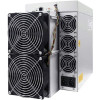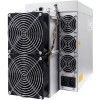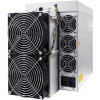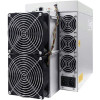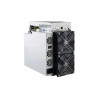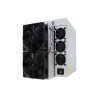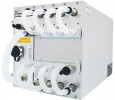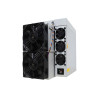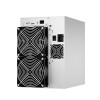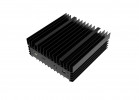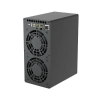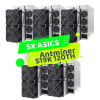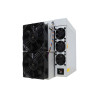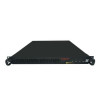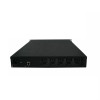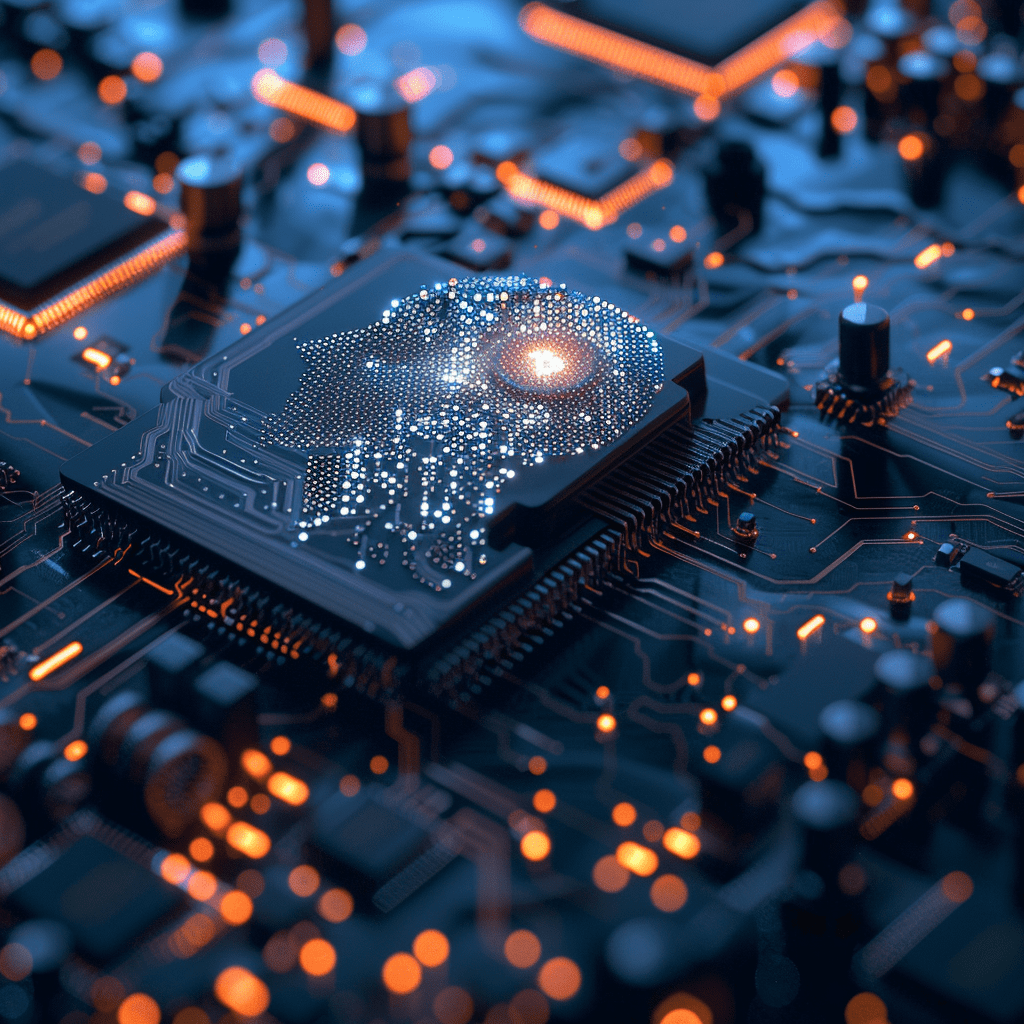
The Fundamentals of Cryptocurrency Mining ASICs
In the ever-changing digital world, cryptocurrencies have emerged as an alternative asset class, offering immense financial potential but also raising considerable technological challenges. At the heart of this ecosystem are ASICs (Application-Specific Integrated Circuits), specialized electronic components that have revolutionized the cryptocurrency mining industry.
ASICs are microchips designed to perform a specific task extremely efficiently. Unlike general processors, such as those found in personal computers, ASICs are optimized for particular applications, such as cryptocurrency mining.
Their operation is based on a highly specialized architecture that maximizes performance for a given task. In the context of cryptocurrency mining, ASICs are configured to perform complex calculations necessary for transaction validation and network security.
The main operation of ASICs in cryptocurrency mining is hashing. Hashing is a mathematical process that transforms data input into fixed-length output, usually as a string of alphanumeric characters. In the context of mining, ASICs perform millions of hash calculations per second in order to find a specific value that validates a block of transactions and allows them to add it to the blockchain.
The design of the ASICs is meticulously optimized for this task. Each IC is specifically designed to perform hashing operations efficiently, minimizing power consumption and maximizing performance. These chips are often produced in large quantities, which reduces manufacturing costs per unit and makes them affordable for miners.
However, the specificity of ASICs has both advantages and disadvantages. On the one hand, their energy efficiency and high performance make them indispensable for mining certain cryptocurrencies, such as Bitcoin. Miners who use ASICs have a significant advantage over those who use more general graphics processing units (GPUs) or central processors (CPUs).
On the other hand, this specialization makes ASICs not very versatile. Unlike GPUs or CPUs, which can be reused for a variety of computational tasks, ASICs can only be used for the cryptocurrency mining for which they were designed. This means that their value decreases significantly if the cryptocurrency they mine becomes obsolete or if a new technology emerges.
In addition, the arms race in the ASIC space has led to an increasing centralization of cryptocurrency mining. Large market players can afford to invest heavily in state-of-the-art ASICs, relegating smaller, individual miners to marginal roles in the network.
Despite these challenges, ASICs continue to play a crucial role in the cryptocurrency ecosystem. Their efficiency and computing power make them indispensable for securing networks and validating transactions. However, their specialization also makes them vulnerable to changes in the technological and economic landscape, highlighting the need for continuous innovation in this rapidly evolving field.
The Specific Requirements of Artificial Intelligence
In the ever-changing world of artificial intelligence (AI), computing power has become a critical resource. From its humble beginnings, AI has made dramatic advances, demonstrating its ability to perform tasks once reserved for the human mind. However, this exponential growth is accompanied by an ever-increasing demand for computing power, posing significant challenges for researchers, developers, and businesses.
AI tasks are varied and complex, ranging from image recognition to machine translation to big data analysis. To perform these tasks effectively, AI systems require considerable computational resources. This requirement stems from several key factors.
First, the very nature of machine learning, a critical subfield of AI, requires repeated iterations across large data sets. Machine learning algorithms, like deep neural networks, require intensive training on training data in order to properly generalize models to unknown data. The larger and more complex the datasets, the greater the computing power required.
Moreover, the increasing sophistication of AI models is contributing to the increasing demand for computing power. Researchers are constantly developing new algorithms and architectures, such as convolutional neural networks and generative adversarial networks, to improve the performance of AI systems in various fields. However, these more advanced models are often more complex and therefore require more computational resources to train and deploy.
Another factor to consider is the need to process real-time data in many AI scenarios. For example, autonomous driving systems need to make instantaneous decisions based on information from sensors such as cameras and lidars. To meet this requirement, AI systems must be able to process large amounts of data in real-time, which requires considerable computing power.
Faced with these challenges, researchers are actively exploring various solutions to optimize the use of computing power in the field of AI. One of the most common approaches is to use graphics processing units (GPUs) to speed up AI-related calculations. GPUs, initially designed for graphics applications, have proven to be effective tools for machine learning tasks by effectively parallelizing operations on large data sets.
In addition, companies such as Google, NVIDIA, and Intel are investing heavily in the development of specialized processors for AI, such as tensor processing units (TPUs) and ASIC (application-specific integrated circuits) chips. These chips are designed to run AI operations even more efficiently than traditional GPUs, leveraging specialized architectures for specific AI tasks.
In conclusion, computing power remains a major challenge in the field of AI, but significant progress is being made to meet this growing requirement. By leveraging technologies such as GPUs, TPUs, and ASICs, researchers and developers are able to address AI challenges and continue to push the boundaries of this exciting field.
In the rapidly expanding field of artificial intelligence (AI), one of the crucial challenges facing researchers and developers is the need for maximum flexibility in learning and processing algorithms. This flexibility is essential to meet the diversity of complex tasks that AI is called upon to perform, ranging from image recognition to machine translation to autonomous vehicle driving. In this article, we take an in-depth look at the importance of this flexibility and the strategies used to achieve it.
First, it's essential to understand that the requirements of AI tasks can vary greatly. For example, a deep learning algorithm used for object detection in images must be able to recognize a wide variety of objects in different contexts, while a machine translation algorithm must be adaptable to multiple languages and grammatical structures. This diversity of tasks requires algorithms that can adapt and evolve according to the specific needs of each application.
The flexibility of AI algorithms is also crucial to enable continuous innovation in the field. Researchers need to be able to experiment with new ideas and techniques without being constrained by rigid technical constraints. For example, the emergence of new deep neural network architectures requires learning algorithms that can adapt to these complex and often unconventional architectures.
To address these challenges, researchers are exploring different approaches to increase the flexibility of AI algorithms. A common approach is to use transfer learning techniques, where a model pre-trained on a specific task is adapted to a new task by adjusting its parameters. This approach makes it possible to benefit from the knowledge already acquired by the model while making it capable of adapting to new contexts.
Another promising approach is the use of self-supervised learning techniques, where algorithms are able to learn from unlabeled data. This allows models to gain a deeper, more general understanding of the data, making them more flexible and able to generalize to new situations.
In addition, researchers are actively exploring new neural network architectures and optimization techniques to increase the flexibility of AI algorithms. For example, modular architectures allow researchers to combine different specialized modules to create AI systems tailored to specific tasks. Similarly, adaptive optimization techniques allow algorithms to learn to adjust their own parameters based on input data, improving their ability to adapt to new situations.
The Limitations of ASICs in the Context of AI
In the race for supremacy in artificial intelligence (AI), specialized processors, known as application-specific integrated circuits (ASICs), have often been relegated to the background. Although these chips have proven themselves in other fields, such as cryptocurrency mining, their adoption in the field of AI is limited by several flexibility constraints.
ASICs are designed to perform a specific task efficiently, making them ideal for applications like mining Bitcoin or other cryptocurrencies. However, this extreme specialization backfires when it comes to varied and evolving tasks unique to AI.
One of the main constraints is their lack of flexibility. Unlike general-purpose processors like CPUs (central processing units) or GPUs (graphics processing units), ASICs are configured to perform a single operation or a specific set of tasks. This rigidity makes them ill-suited to the changing demands of AI algorithms, which often require flexible architectures capable of performing a variety of calculations.
AI algorithms, such as those used in deep learning, require processors to be highly adaptable to perform complex operations such as matrix multiplication, gradient backpropagation, or data normalization. ASICs, optimized for specific operations, can't compete with the versatility of CPUs or GPUs in this area.
In addition, the development cycle of an ASIC is long and expensive. Designing and manufacturing an ASIC chip requires significant investments in terms of time, resources, and capital. This cumbersomeness hinders innovation and makes it difficult to quickly adapt to advances and changes in the field of AI, where new algorithms and techniques are constantly emerging.
ASICs are also less efficient for AI tasks that require calculations of varying precision or loosely structured operations. ASIC architectures are often optimized for specific operations with fixed accuracy, which can result in performance loss or inefficient use of resources for tasks that require varying accuracy, such as natural language processing or image recognition.
Faced with these constraints, researchers and developers are turning to other solutions, such as GPUs and TPUs (Tensor Processing Units), that provide greater flexibility and processing capacity for AI workloads. GPUs, initially designed for graphics applications, have proven to be particularly effective for the parallel computations needed to train and infer AI models. TPUs, developed by Google, are even more specialized for AI tasks, offering superior performance while consuming less power than traditional GPUs or CPUs.
Despite these challenges, some researchers and companies are trying to overcome the limitations of ASICs by exploring innovative approaches such as flexible ASICs or hybrid architectures combining ASICs and other processors. These efforts could eventually pave the way for a new generation of specialized chips that can meet the evolving demands of AI.
Alternatives to ASICs for AI
In the vast artificial intelligence (AI) ecosystem, emerging technologies play a crucial role in meeting the growing demands for computing power. Among these technologies, GPUs (Graphics Processing Units) and TPUs (Tensor Processing Units) stand out as essential pillars, enabling significant advancements in the field. Their use goes far beyond simple graphics rendering, turning these components into must-have tools for the most demanding AI workloads.
GPUs, originally designed for graphics-intensive processing in video games and design applications, have evolved into extremely powerful parallel computing engines. Their massive parallel architecture allows a large number of tasks to be processed simultaneously, making them ideal for data-intensive calculations and simultaneous operations, as is often the case in deep neural networks used in AI.
TPUs, on the other hand, are a more recent innovation, developed by Google to meet the specific needs of AI workloads. Unlike GPUs, which are general-purpose architectures, TPUs are specifically designed to accelerate matrix multiplication operations and tensor computations, which are at the heart of many machine learning algorithms and deep neural networks.
One of the main reasons why GPUs and TPUs are widely preferred for AI workloads is their ability to efficiently handle "parallelizable" operations. AI-related tasks, such as training models on large datasets, often consist of a multitude of calculations that can be performed simultaneously. GPUs and TPUs excel at this, distributing these computes across thousands of processing cores, significantly speeding up the time it takes to perform these operations.
In addition, GPU and TPU manufacturers are investing heavily in research and development to improve their respective architectures to meet the ever-increasing demands of the AI field. Advances such as the integration of dedicated computing cores for artificial intelligence, the optimization of programming software and the increase in on-board memory have made it possible to significantly increase the performance and energy efficiency of these components.
However, despite their undeniable advantages, GPUs and TPUs are not without limitations. The high costs associated with these components, as well as their high energy consumption, can be a barrier for some projects or organizations with limited resources. Additionally, the scalability of GPU and TPU architectures can pose challenges when handling extremely large or complex workloads.
Despite these challenges, the widespread use of GPUs and TPUs in AI continues to grow exponentially. Their ability to accelerate machine learning, image recognition, natural language processing, and many other applications make them invaluable tools for researchers, developers, and companies at the forefront of AI innovation.
Research Underway for ASICs and AI Convergence
In the world of technology, the race for computing power is perpetual. As advances in artificial intelligence (AI) require ever-increasing processing capabilities, manufacturers are constantly looking for ways to improve processor performance. In this never-ending quest, an initiative emerges as a glimmer of hope: the development of flexible ASICs for AI.
ASICs, or application-specific integrated circuits, are chips designed to perform a specific task optimally. Traditionally used in cryptocurrency mining due to their energy efficiency and processing speed, these ASICs have proven to be unsuitable for AI due to their lack of flexibility. AI algorithms, such as those used for deep learning, require more versatile and adaptable processing capability.
Faced with this challenge, researchers and companies have embarked on the development of ASICs specifically designed for AI. The goal is to combine the power efficiency and processing speed of ASICs with the flexibility to run a variety of AI algorithms.
One of the most promising approaches in this field is the use of FPGAs (Field Programmable Gate Arrays) to create flexible ASICs (the Antminer X5 is equipped with FPGAs to mine Monero). FPGAs are programmable chips that allow developers to configure their operation to meet the specific needs of different tasks. Using FPGAs as a foundation, manufacturers can design ASICs that can adapt to the changing requirements of AI algorithms.
Another approach is to explore new processor architectures that incorporate elements of flexibility while preserving the power efficiency of ASICs. Companies such as Google, Intel, and NVIDIA are investing heavily in the research and development of these processor architectures, hoping to create optimal solutions for AI workloads.
The potential benefits of these flexible ASICs for AI are considerable. By combining the processing power of ASICs with the flexibility to run a variety of AI algorithms, these chips could enable significant advances in areas such as image recognition, machine translation, and predictive modeling.
However, the path to creating flexible ASICs for AI is fraught with obstacles. The design of these chips requires considerable technical expertise, as well as significant investments in research and development. Additionally, these new technologies can take years to validate and bring to market, making it difficult to predict when they will be available for widespread use.
Despite these challenges, the commitment to developing flexible ASICs for AI remains strong. The potential performance and power efficiency benefits of these chips are too great to ignore. As the demand for processing capabilities for AI continues to grow, it's likely that we'll see more and more efforts to overcome technical hurdles and develop these game-changing technologies. Ultimately, flexible ASICs could play a crucial role in advancing AI and paving the way for exciting new discoveries and applications.
Future Perspectives and Implications
In the ever-changing world of technology, there is growing interest in advances in the fields of Artificial Intelligence (AI) and cryptocurrency mining. A successful convergence between these two areas could potentially reshape the technological and financial landscape significantly. The implications of such convergence are far-reaching and promise changes that could affect various sectors of the global economy.
One of the main impacts of successful convergence would be the improved efficiency and profitability of the cryptocurrency mining process. Currently, cryptocurrency mining relies heavily on graphics cards (GPUs) and, in some cases, application-specific integrated circuits (ASICs). However, these methods have limitations in terms of power consumption and computing power. By integrating AI technologies into the mining process, it would be possible to optimize the available resources, thereby reducing energy consumption while increasing the overall performance of the system.
A successful convergence between AI and cryptocurrency mining could also open up new opportunities for decentralized mining. Currently, cryptocurrency mining is largely dominated by large mining pools, which can lead to excessive centralization of computing power. By using AI techniques such as federated learning or e-learning, it would be possible to distribute calculations more equitably among individual miners, thus promoting greater decentralization of the mining process.
Moreover, a successful convergence between AI and cryptocurrency mining could lead to significant advancements in the field of blockchain network security. AI techniques can be used to detect and prevent potential attacks, such as 51% attacks or double-spend attacks, enhancing the reliability and security of cryptocurrency networks.
From a financial point of view, such convergence could also have a major impact. By making the cryptocurrency mining process more efficient and profitable, this could boost the adoption and use of cryptocurrencies, which could potentially increase their value in the market. In addition, greater decentralization of the mining process could help reduce the concentration of economic power in the hands of a few players, which could have positive implications for the stability and resilience of the cryptocurrency market.
However, despite the many potential benefits of a successful convergence between AI and cryptocurrency mining, it should be noted that there are also challenges and hurdles to overcome. For example, the successful integration of AI technologies into the mining process could require significant investments in research and development, as well as significant adjustments to existing infrastructure. Additionally, there are important ethical and regulatory considerations to consider, especially when it comes to data privacy and governance of blockchain networks.


